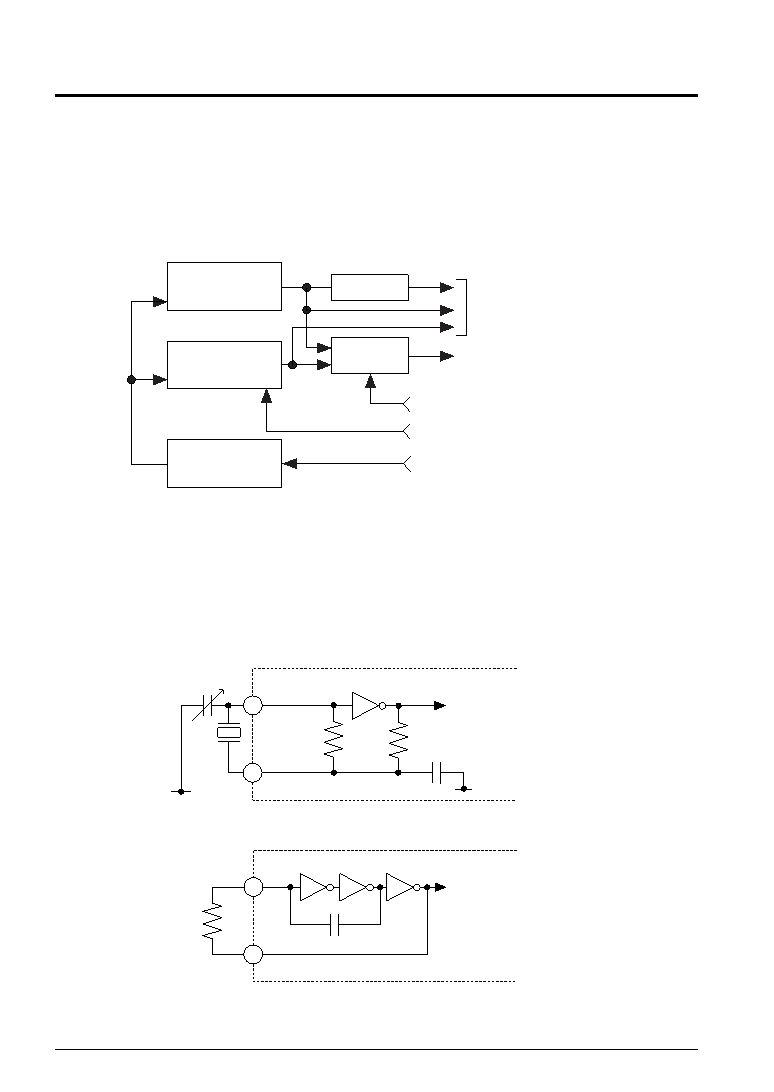- 您現(xiàn)在的位置:買賣IC網(wǎng) > PDF目錄98068 > S1C63466D 4-BIT, MROM, 4.1 MHz, MICROCONTROLLER, UUC140 PDF資料下載
參數(shù)資料
| 型號: | S1C63466D |
| 元件分類: | 微控制器/微處理器 |
| 英文描述: | 4-BIT, MROM, 4.1 MHz, MICROCONTROLLER, UUC140 |
| 封裝: | DIE-140 |
| 文件頁數(shù): | 62/135頁 |
| 文件大?。?/td> | 1053K |
| 代理商: | S1C63466D |
第1頁第2頁第3頁第4頁第5頁第6頁第7頁第8頁第9頁第10頁第11頁第12頁第13頁第14頁第15頁第16頁第17頁第18頁第19頁第20頁第21頁第22頁第23頁第24頁第25頁第26頁第27頁第28頁第29頁第30頁第31頁第32頁第33頁第34頁第35頁第36頁第37頁第38頁第39頁第40頁第41頁第42頁第43頁第44頁第45頁第46頁第47頁第48頁第49頁第50頁第51頁第52頁第53頁第54頁第55頁第56頁第57頁第58頁第59頁第60頁第61頁當(dāng)前第62頁第63頁第64頁第65頁第66頁第67頁第68頁第69頁第70頁第71頁第72頁第73頁第74頁第75頁第76頁第77頁第78頁第79頁第80頁第81頁第82頁第83頁第84頁第85頁第86頁第87頁第88頁第89頁第90頁第91頁第92頁第93頁第94頁第95頁第96頁第97頁第98頁第99頁第100頁第101頁第102頁第103頁第104頁第105頁第106頁第107頁第108頁第109頁第110頁第111頁第112頁第113頁第114頁第115頁第116頁第117頁第118頁第119頁第120頁第121頁第122頁第123頁第124頁第125頁第126頁第127頁第128頁第129頁第130頁第131頁第132頁第133頁第134頁第135頁

24
EPSON
S1C63466 TECHNICAL MANUAL
CHAPTER 4: PERIPHERAL CIRCUITS AND OPERATION (Oscillation Circuit)
VSS
CGX
X'tal
OSC2
OSC1
R
DX
C DX
To CPU
(and peripheral circuits)
FX
VSS
OSC2
OSC1
C CR
To CPU
(and peripheral circuits)
R
CR1
(b) CR oscillation circuit
Fig. 4.3.2.1 OSC1 oscillation circuit
(a) Crystal oscillation circuit
4.3 Oscillation Circuit
4.3.1 Configuration of oscillation circuit
The S1C63466 has two oscillation circuits (OSC1 and OSC3). OSC1 is either a crystal or a CR oscillation
circuit that supplies the operating clock to the CPU and peripheral circuits. OSC3 is either a CR or a
ceramic oscillation circuit. When processing with the S1C63466 requires high-speed operation, the CPU
operating clock can be switched from OSC1 to OSC3 by the software. To stabilize operation of the internal
circuits, the operating voltage VD1 must be switched according to the oscillation circuit to be used. Figure
4.3.1.1 is the block diagram of this oscillation system.
Oscillation circuit control signal
CPU clock selection signal
To CPU
To peripheral circuits
Clock
switch
Oscillation system
voltage regulator
OSC3
oscillation circuit
OSC1
oscillation circuit
Operating voltage selection signal
VD1
Divider
Fig. 4.3.1.1 Oscillation system block diagram
4.3.2 OSC1 oscillation circuit
The OSC1 oscillation circuit generates the main clock for the CPU and the peripheral circuits. Either the
crystal oscillation circuit or the CR oscillation circuit can be selected as the circuit type by mask option.
The oscillation frequency of the crystal oscillation circuit is 32.768 kHz (Typ.) and the CR oscillation
circuit is 60 kHz (Typ.).
Figure 4.3.2.1 is the block diagram of the OSC1 oscillation circuit.
相關(guān)PDF資料 |
PDF描述 |
|---|---|
| S1C63466F | 4-BIT, MROM, 4.1 MHz, MICROCONTROLLER, PQFP144 |
| S1C63567F0A0100 | MICROCONTROLLER, PQFP144 |
| S1C63653F | 4-BIT, FLASH, 4 MHz, MICROCONTROLLER, CQFP100 |
| S1C6F567D0A0100 | MICROCONTROLLER, UUC141 |
| S1C6N3B0D0A0100 | MICROCONTROLLER, UUC54 |
相關(guān)代理商/技術(shù)參數(shù) |
參數(shù)描述 |
|---|---|
| S1C63557D04Q000 | 制造商:Seiko Instruments Inc (SII) 功能描述:EPSON MCU 4BIT |
| S1C63567 | 制造商:EPSON 制造商全稱:EPSON 功能描述:4-bit Single Chip Microcomputer |
| S1C63616 | 制造商:EPSON 制造商全稱:EPSON 功能描述:4-bit Single Chip Microcomputer |
| S1C63632 | 制造商:EPSON 制造商全稱:EPSON 功能描述:4-bit Single Chip Microcomputer |
| S1C63653 | 制造商:EPSON 制造商全稱:EPSON 功能描述:CMOS 4-bit Single Chip Microcontroller |
發(fā)布緊急采購,3分鐘左右您將得到回復(fù)。